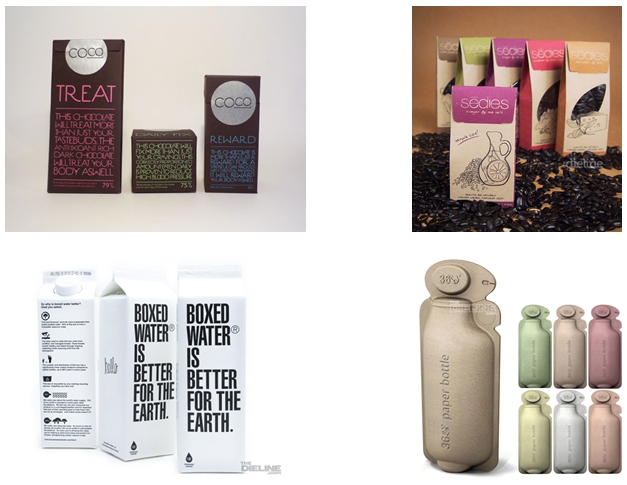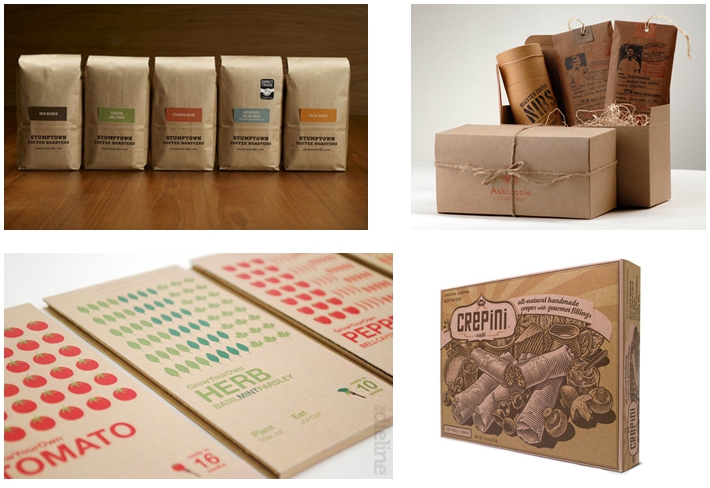Sustainability has recently become a new trend in doing business. As the overall green consciousness grows and consumers worldwide prefer buying eco-friendly products, companies tend to become more environmentally friendly reducing their impact on the environment.
In most cases, the areas for influence reductions are minimizing the level of greenhouse gases emission during the process of manufacturing and transportation of the finished goods and using renewable resources in the production stage.
However, eco-friendly packaging is still a matter of concern for most manufacturers because their major objective is to decrease expenditures and maximize profits, which is not always possible when it comes to upgrading packaging design and switching to eco-friendliness.
This paper will focus on the issues of eco-friendly packaging. The topic will be narrowed to the food industry, i.e. food and beverages production. The motivation for choosing food and beverage industry is its indissolubility from direct connection with the everyday life of the consumers without regard to the region or culture.
The rationale for choosing this topic for the future research is the fact that the transition towards environmentally friendly packaging has both economic and environmental aspects. Economically, it might help reduce costs in the long run because traditional packaging technologies are characterised by the excess use materials and resources and high waste rates.
Initially, such transition would require investments in designing new packages and upgrading the process of manufacturing and packaging, but once this step is taken and all necessary changes are implemented, a company will obtain an opportunity to reduce expenditures and win new customers, who choose to buy green products and those packed in recyclable materials.
The environmental aspect of the topic under investigation is simple and comes down to reducing the negative impact on the natural environment and contributing to solving the climate change problem because of using recyclable packaging or making it from post-consumer waste or already recycled materials.
This research will focus on investigating the trends in changing the face of packaging and shifting to eco-friendly technologies and answer the following research questions:
- What are the possible strategies for changing packaging and making it more environmentally friendly?
- What are the ways for developing the packaging design to hint the consumers that the package is environmentally friendly?
- What are the necessary steps for the transition towards eco-friendly packaging?
- How to persuade companies that the shift towards environmentally friendly packaging is economically, socially, and environmentally profitable in light of conducting cost and benefit analysis?
- What is the management process for promoting and selling eco-friendly packaging design?
The proposed research design includes several steps. First of all, it is vital to determine what is eco-friendly packaging and what requirements should be met in order to call a package environmentally friendly.
Second, it is significant to estimate the current trends in packaging food and beverages, i.e. identify what are the primary materials and resources used for producing it and how recyclable they are. Third, it is paramount to analyse the current trend in eco-friendly packaging with the aim of proposing the new design.
The expected results of the further research, i.e. the desired activities, include conducting a comprehensive theoretical research, developing the design of eco-friendly packaging, and crafting the management plan for selling it. Reaching the expected objectives of the future research can be achieved by combining several research methods.
For the purposes of this research, the most appropriate methods include theoretical framework, qualitative and quantitative analysis, ethnography. Theoretical framework will be necessary in order to understand the specificities of the subject under investigation.
Qualitative and quantitative analysis will be advantageous for determining the current trends in packaging. Specifically, qualitative method will be deployed for estimating the primary qualities of packaging such as materials and resources used while quantitative research will be used for understanding the figures behind the determined qualities, i.e. the rate of spending on packaging and percentage of recycled or recyclable materials in packages.
Finally, ethnography will be helpful for assessing major stakeholder interests by understanding the preferences in packaging and whether there are any cultural peculiarities regarding the issue (Silva et al. 2015; Salkind 2012).
Moodboard – creating a framework that can be sold
Nowadays, packaging, in most case, is made of several layers of foil and plastic. These materials cannot be considered eco-friendly because they are not recyclable due to the fact that it is impossible to separate the layers of foil (Wu 2014).
That is why the primary idea behind developing the new design is to change foil and plastic with paper, paper pulp, and recycled materials. The inspiration for this notion came from the packaging concepts shown below.
The motivation for proposing paper and other recyclable materials as the alternatives for foil and plastic is the fact that they are cost-effective, environmentally friendly, highly flexible, printable, easily recyclable, mechanically strong, suit all sizes and shapes of the products, and are produced from consumer waste and already recycled materials (Muthu 2016; Berk 2013; Natarajan, Govindarajan & Kumar 2015).


As it was mentioned, the industry of design is the food and beverages industry. The primary advantage of eco-friendly packaging for this sector of manufacturing is that it is absolutely healthy.
Moreover, because of the materials’ flexibility, paper and paper pulp cab be used for designing creative and bright packaging for a great variety of products and drinks including water, juices, coffee beans, cocoa, nuts, chocolate and sweets, spices, and even wine.Eco-friendly packaging for the food and beverages industry (Reyes 2009).
The primary idea for the new packaging is to make it of 100% recyclable materials because, in other cases, there is no sense in switching to it.
The motivation for making this statement is the fact that packages using both recyclable and non-recyclable materials cannot be considered eco-friendly because they are automatically non-recyclable (Wu 2014).
The most significant detail of the concept of design is to make a package bright but, at the same time, minimalistic, so that it attracts attention of potential consumers and provides them only with the necessary information about the product highlighting the recyclability of packaging.
This information should be mentioned on the face of a package. Recyclability is proposed to be indicated with a traditional ring of green arrows. Moreover, the design implies indicating a green leaf together with a green arrow, which would mean eco-friendliness and that a package is made of 100% recyclable materials.
As of the information about the product, it is proposed to include only the name of the product itself, e.g. fresh water or coffee beans, in plain, bright text and mention the rest of the details on the back. This simple but bright design will hint to environmental friendliness on the subconscious level.
The proposed design technique, which will be used in the design process, is a hybrid one. This technique implies the combination of traditional and digital design methods. The main idea behind this strategy is to conceptualise the design by hand sketching first and then add the required details using computers and designer applications (Gorski 2015).
The motivation for choosing this tool is the fact that sketching is more effective in light of communication between designers and managers and creation of something new if compared to digital design.
On the other hand, computer designing is beneficial because of the ability to simulate the project and make changes easily. So, it is the combination of two techniques, which is the most appropriate technique for the purposes of introducing the new design of packaging.
The target audience of this design project is the senior management of the companies specialising in producing food and beverages. The project aims at attracting their attention because these people develop plans and strategies for their firms’ future development.
So, it is vital to persuade them that environmentally friendly packaging is economically, socially, and ecologically beneficial. The strategy for convincing them is conducting cost and benefit analysis of the transition towards paper and paper pulp packaging pointing.
Project management
Project process will include several interrelated steps. First of all, it is necessary to determine the problem, which should be solved, and those, who would be interested in the proposed solution. In our case, it is packaging and its relation to solving environmental issues as the problem and companies operating in the food and beverage industry as stakeholders.
Second, it is required to conduct the research of the problem, i.e. evaluate current trends and gaps for improvement. This step is usually the most time-consuming because it demands a thorough analysis of economic environment and strategies of key economic actors of the chosen sector.
The next step is crafting potential solutions to the problem. In our case, it is offering to switch to bright and minimalistic packaging made of recyclable materials such as paper and paper pulp. This stage usually does not take long time because an accurate research conducted at the second phase of project design points to the gaps, which should be filled.
Next, it is important to evaluate ideas and collect them to develop a design of the new packaging using the hybrid technique described above. This process is also time-consuming because it requires intense communication and specific skills such as the ability to think analytically, creativity, and enough knowledge to operate designer applications.
The following step implies reviewing the design proposal and improving it in order to eliminate significant defects. This stage requests communication with senior management of the target companies because it is the only way to detect deficiencies. The final step is implementation.
Because the rate of global change is spectacular, it is crucial to assure that the process is not too long because others might start promoting similar ideas. Hence, the proposed timeline is as follows:
- Conducting research – 1 month;
- Finding solutions – 1 week;
- Developing design – 3 weeks;
- Communication with managers and changes – 3 weeks;
- Implementation – 1 month.
References
Berk, Z 2013, Food process engineering and technology, Academic Press, London, United Kingdom.
Gorski, G 2015, Hybrid drawing techniques: design process and presentation, Routledge, New York, New York.
Muthu, S S 2016, Environmental footprints of packaging, Springer Science +Business Media, Singapore.
Natarajan, S, Govindarajan, M & Kumar, B 2015, Fundamentals of packaging technology, PHI Learning, Delhi, India.
Reyes, J 2009, Eco-friendly packaging concepts.
Salkind, N J 2012, 100 questions (and answers) about research methods, SAGE Publications, Thousand Oaks, California.
Silva, E A, Healey, P, Harris, N & Broeck, P V 2015, The Routledge handbook of planning research methods, Routledge, New York, New York.
Wu, A 2014, ‘Good product, bad package: top sustainable packaging mistakes,’ The Guardian.